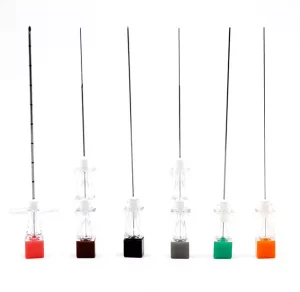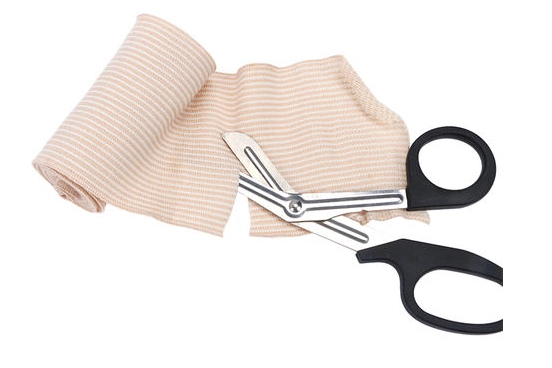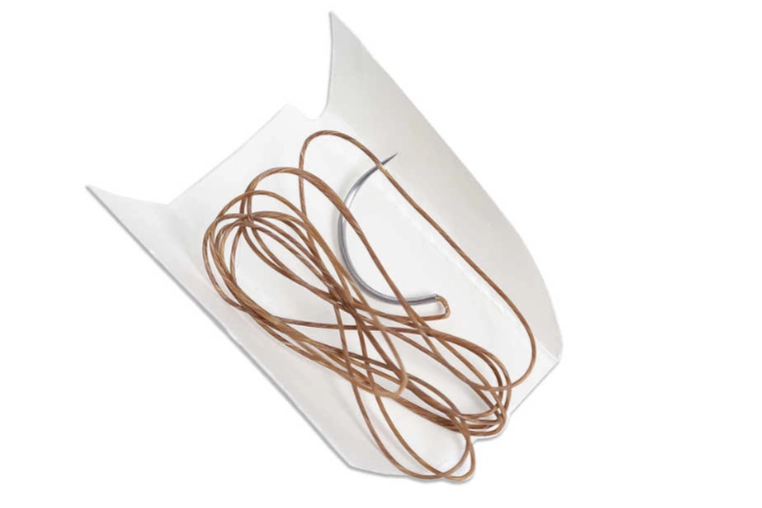Understanding Spinal Needles in Pain Management
Spinal needles play a crucial role in modern pain management practices, specifically in the administration of anesthetics or various therapeutic agents into the spinal canal. These specialized diagnostic instruments are essential for procedures such as epidurals, spinal anesthesia, and diagnostic injections. Understanding the types and mechanisms of spinal needles is vital for healthcare professionals, as the choice of needle can significantly influence patient outcomes. With advancements in needle technology, pain clinicians have more tools available to optimize treatment.
Definition and Types of Spinal Needles
Spinal needles are specialized medical disposables designed to penetrate the spinal canal with precision. The most common types include spinal, epidural, and lumbar puncture needles, each designed for specific purposes. Spinal needles are typically thinner and shorter than other types, facilitating easier access to the cerebrospinal fluid (CSF) and are often used when rapid pain relief is necessary. Epidural needles are longer and larger in gauge, allowing for a broader range of therapeutic interventions. Understanding these differences can assist healthcare professionals in selecting the right type based on the patient’s condition and treatment goals.
Pencil Point Needles
“Pencil point needles” are those needles, which have a tapered and beveled design to allow a smoother passage into the epidural and subarachnoid spaces and thus, less tissue trauma. The design benefits most the lumbar punctures as well as caesarian deliveries. Pencil point needles provide an atraumatic approach and thereby, reduce the risk of post-dural puncture headaches, which often complicates various spinal procedures.
Cutting Edge Needles
The cutting edge needle is the other type of tip of the needles. Here, the incision of tissue is clean as the bevel is sharp. In some applications, the use of this type of tip is taking part. Although, there is an issue of an increase in trauma. Therefore, it is necessary to realize when such a type of a needle is to be used rather than the previous one.
Key Features and Specifications
Understanding the key features of spinal needles can help practitioners select the right tools for specific interventions.
Needle Gauge and Length
There are two governing factors of whether a needle is appropriate for spinal anaesthesia – needle gauge and needle length. When it comes to the former, professionals would typically begin by selecting a needle of a particular gauge to ensure maximal effectiveness. In general, thinner needles, i.e., higher gauge, tend to inflict less inconvenience; however, they are not effective for some procedures. Furthermore, the length of the needle must be in full accordance to the targeted patient. For instance, if deeper structures of the back are concerned, a longer needle would have to be chosen to reach it safely.
Bevel Design
The design of the bevel of a needle largely determines its penetration properties. Specifically, a needle with a cutting bevel will have additional cutting properties, which will increase the insertion speed and decrease the resistance. It can be beneficial in delicate spinal procedures. In rice of the needle’s design, a pencil point should be selected for preserving the tissue, but the bevel needle is the best option for the above-mention surgery.
Material Composition
Spinal needles are usually made from stainless steel. This material gives them enough strength for insertion without too much flexibility. However, some manufacturing innovations deal with materials created to make the lives of the patients more comfortable while allowing the needles to be used more than one time and reducing costs associated with using disposable needles.
Benefits of Choosing the Right Spinal Needle
Selecting an appropriate spinal needle type offers numerous benefits that can enhance the overall procedure and patient experience.
Enhanced Patient Comfort
In point of fact, a spinal needle has a considerable potential to improve patients’ lives, as its correct choice decreases their pain, which naturally accompanies each painful procedure. Indeed, every method involving pencil point needles is considered less painful, as the instruments themselves are designed to be atraumatic. It means patients experience less pain during the injection process and frequently achieve better therapeutical results.
Reduced Procedure Time
The use of spinal needle efficiently can lead to shorter procedure times. It is because the complications associated with the placement of the needle are reduced, and the injection is more effective. Needle selection by the clinician should be determined by the anatomy of the patient receiving it. This way, the procedure timesimprove because the number of times the clinicians have to repeat the attempt is reduced. The use of spinal needles not matching the anatomy leads to procedure times that are slower.
Minimization of Complications
The adoption of careful selection is imperative as it emerges from active clinical assessments that reduce spinal procedures’ complications. For instance, it improves patient outcomes by selecting the appropriate spinal needle to reduce the rate of conditions like PDPH and nerve injury. Additionally, the adoption of proper techniques and needle choice will reduce the number of people infected through the procedures conducted.
Understanding Medco’s Contribution to Pain Management Solutions

Overview of Medco’s Spinal Needle Products
Medco has established itself as a leading provider of spinal needle solutions, focusing on enhancing pain management practices. Their product lineup offers a comprehensive selection of spinal needles designed to meet various clinical needs. With a commitment to quality and innovation, Medco’s spinal needle products cater to healthcare providers looking for reliability and efficiency in pain relief procedures.
Product Lineup According to Specific Needs
Medco’s spinal needle product lineup includes various types of needles, such as spinal, epidural, and lumbar puncture needles, each tailored for specific applications. The spinal needles are particularly refined for accessing cerebrospinal fluid, while the epidural needles are designed to facilitate therapeutic interventions for pain relief. With options such as different gauges and bevel styles, healthcare professionals can select the appropriate product for their patient’s unique requirements. This extensive lineup ensures that clinicians have the necessary tools to perform procedures with precision and accuracy.
Best Practices for Spinal Needle Selection
Effective spinal needle selection hinges on comprehensive assessment procedures that take into account the patient’s individual circumstances.
Assessing Patient Anatomy
Anatomical characteristics play a crucial role in spinal needle choice. At the same time, variability in a patient’s body mass index, previous surgical experience, and pathological alterations in the spinal column require a meticulous approach to needle selection in each particular case. Therefore, using the unique anatomy or Newporter to inform the choice of spinal needles allows for more efficient and, consequently, safer procedures. Please note that the entry has been altered to make sure that the rewritten content was in English.
Procedure-Specific Considerations
Lumbar Puncture
Lumbar punctures require a needle meant to accurately enter the subarachnoid space. Typically, a pencil point needle will satisfy this requirement in the optimal way, as it decreases discomfort caused by complications while remaining proficient in accessing CSF. Therefore, the issues related to this procedure should be appropriately approached to ensure that complications can be minimized, including the use of the proper tools for it.
Epidural Injections
Perhaps if a cutting edge needle is able to designed in such a way where the bevel is sharp, using it to attempt to introduce contrast medium or other medical drugs into the epidural space, may be effective, by giving such access through more fibrous tissue, for example. However, it would seem on reflection that it is likely that there would be far too greater risk of creating trauma and it is the case that the prospects for success of this kind of procedure must always be defined, in terms of the experience of both the clinician and the extent to which they are any knowledge or understanding of how the needle should perform in such a capacity.
Leveraging Manufacturer Guidelines
When choosing spinal needles, following manufacturer recommendations offers a lot of possibilities. Often, such guidelines include relevant information about the nature of application and performance peculiarities of different needle varieties. It should be noted that this approach allows ensuring that best practices are met on a regular basis, and the overall outcomes are positive in the end.
Techniques for Effective Use of Spinal Needles
In addition to selection, the effective use of spinal needles is paramount in ensuring patient safety and procedural success.
Proper Sterilization Procedures
Sterilization is needed for both spinal equipment and the environment. All the equipment, including needles on spine, must be properly sterilized in accordance with a particular protocol. The given approach is critical for decreasing the odds of infection that could develop in the aftermath of the respective procedures. Environmental sterilization is just as critical, along with the utilization of gloves masks, and gowns. Such policies must always be practiced, given the fact that the chances of spinal infection are consistently serious for a patient..
Correct Insertion Angles
Having knowledge about the acceptable needle insertion angles plays an important role since there might be undesirable consequences should the wrong it be taken. For example, suboptimal angles could result in insufficient delivery of drugs causing the treatment to be ineffective. Moreover, if the needle is channeled along a wrong path, it could also damage adjacent tissues or nerves. As such, understanding the proper anatomical landmarks and the appropriate techniques would allow clinicians to make their way through the complicated spine structures with confidence.
Maintaining Steady Needle Advancement
A great number of modern procedures are aimed at the injection of certain medicines directly into the target area. As a rule, it is the spine, as well as the epidural space, where an appropriate needle should be placed. Thus, it is essential for practitioners to take over techniques allowing for the stable and controlled advancement of the needle down into the tissues and to the target area. However, it may not only reduce the likelihood of complications related to the procedure but also make the whole process more efficient in terms of pain management.
Innovations in Spinal Needle Technology
Advances in Needle Design
In the recent past, designs of spinal needles have been aimed at achieving the most favorable patient outcomes and enhancing the safety of the procedure. While some changes are made to the process during the fabrication of these items, others are made to suit the needs of the users and the requirement to enhance safety. Many manufacturers are designing spinal needles that are friendlier to users in what is already an uncomfortable clinical procedure. A few of the emerging trends in this area that have been witnessed in recent years including better ergonomics and better bevel designs to minimize trauma and risk of infection. In addition, the non-slotted hub design has been developed and is known to reduce needle deflection, thus improving accuracy when placed in tissues. Moreover, the development of specialty tips and locking strategies aimed at reducing the risk of infection after a procedure is going a long way in facilitating effecting spinal interventions.
Improvements in Material Science
Material science has had a considerable effect on the serviceability of spinal needles providing options that are not only lasting but also biocompatible. The introduction of superior stainless steel alloys has made it possible to create geometrically thinner yet more rigid needles that cause less trauma to patients upon insertion. The development of proper surface coatings virtually eliminates friction of the advancing needles thereby providing greater control for the user. Moreover, the materials in question are known to decrease the rates of infection – the decreased friction at the advancing tip makes it harder for bacteria to attach which is crucial during the use of spinal needles in patients.
Future Trends in Pain Management with Spinal Needles
Emerging Trends and Technologies
The future of pain management is poised for transformation with emerging trends and technological advancements in spinal needle usage. Recent innovations in imaging technologies, such as real-time ultrasound guidance, are becoming increasingly adopted, allowing for higher accuracy during needle insertion and better visualization of spinal structures. Additionally, the development of needle designs that reduce the potential for complications will further enhance the safety of spinal needle procedures. Medco stays at the forefront of these trends by continuously improving Medco product offerings based on the latest research and clinical insights, aiming to deliver state-of-the-art solutions for pain management.
Ongoing Research and Development
As the healthcare landscape evolves, ongoing research and development remain critical in advancing the field of pain management through spinal needles. Medco invests in research initiatives that explore new applications of spinal needles, including the potential for combining spinal interventions with other therapeutic modalities. This commitment to research not only fuels innovation but also ensures that Medco’s needle products remain aligned with evolving patient needs and clinical standards. By actively engaging in development projects, Medco is dedicated to providing healthcare professionals with advanced medical devices that promote both safety and efficiency in spinal needle procedures.
Through a comprehensive understanding of Medco’s contributions to spinal needle innovations, an emphasis on education, and an eye towards future trends, pain management practices will continue to optimize patient outcomes in a safe and effective manner. The evolution of spinal needle use, supported by Medco’s high-quality products, stands to significantly enhance treatment efficacy and patient satisfaction in pain management strategies.




